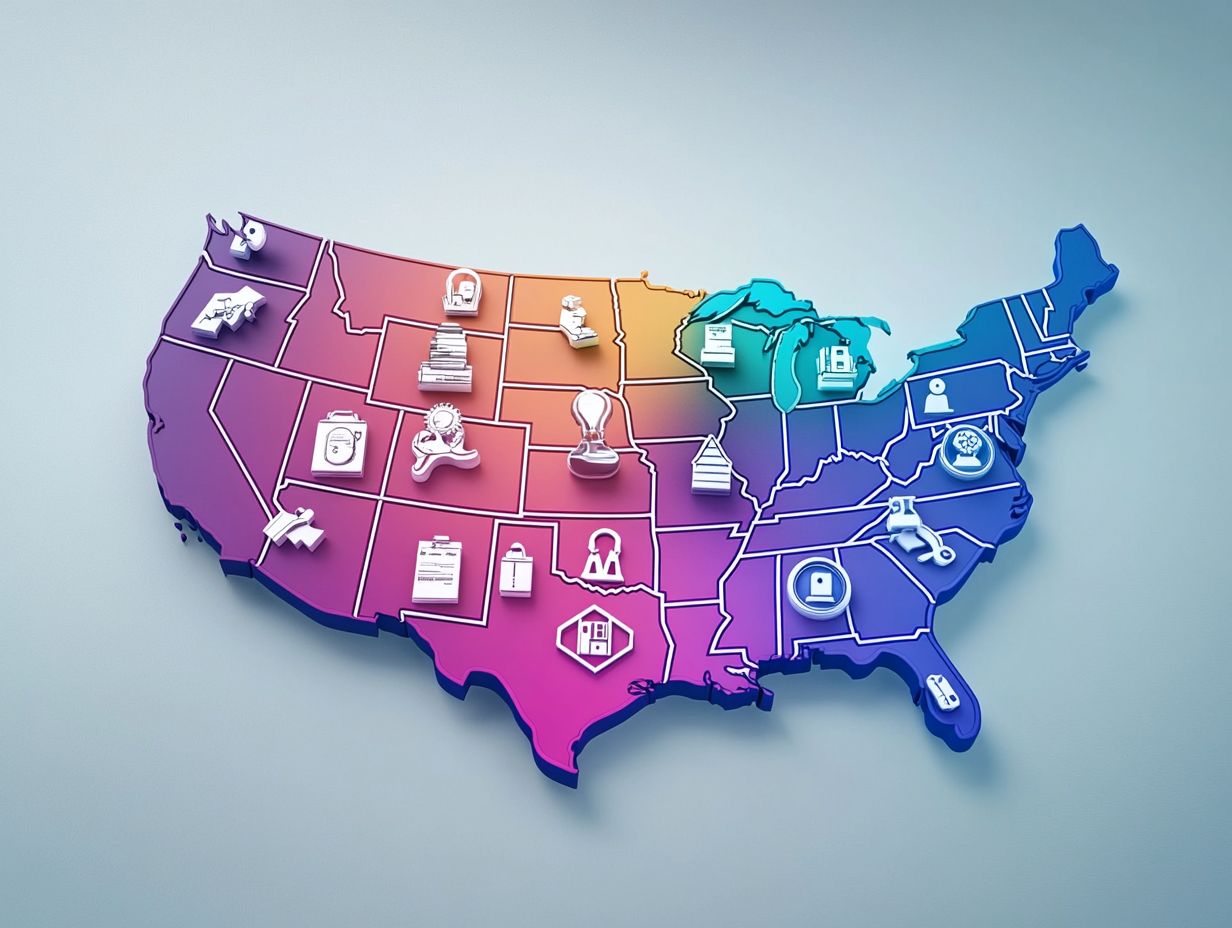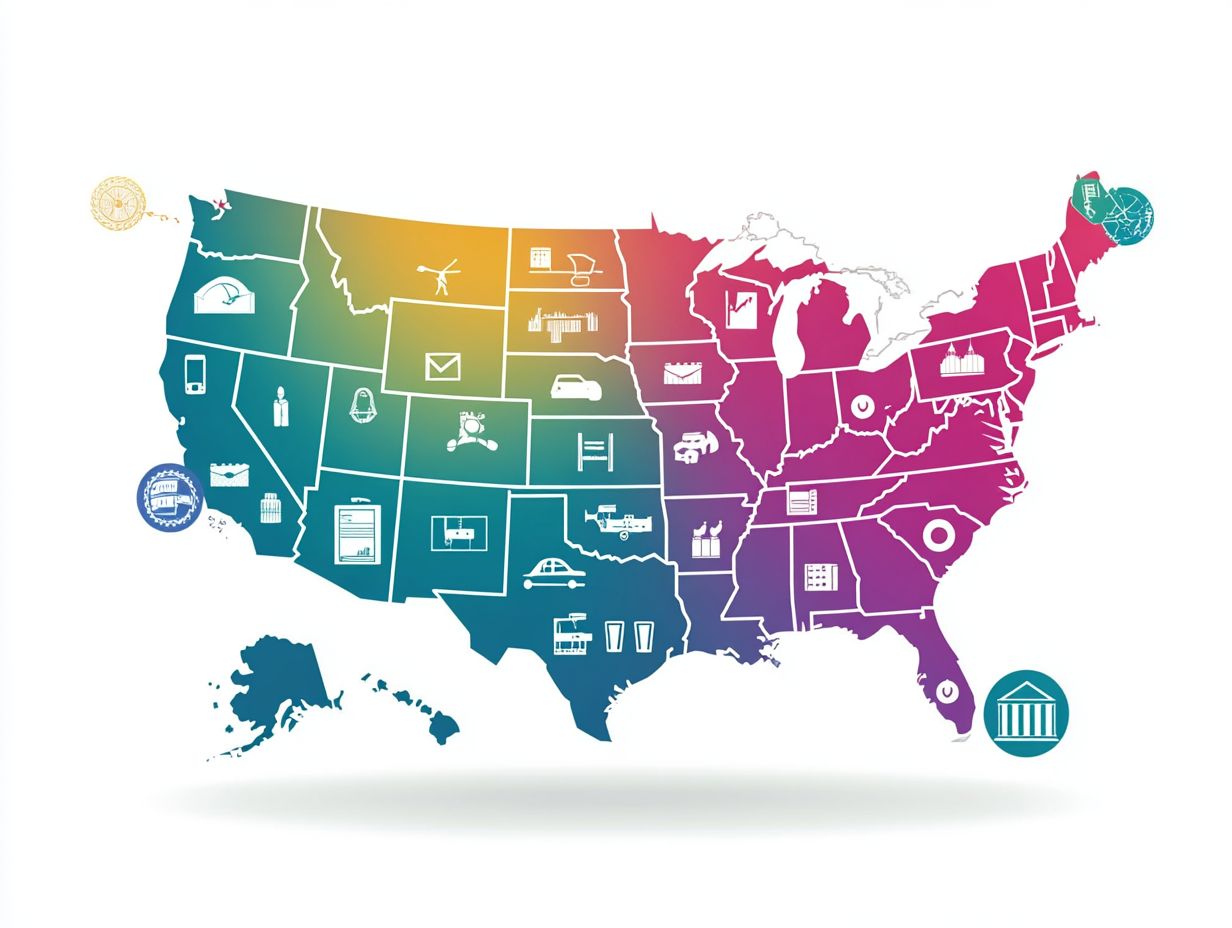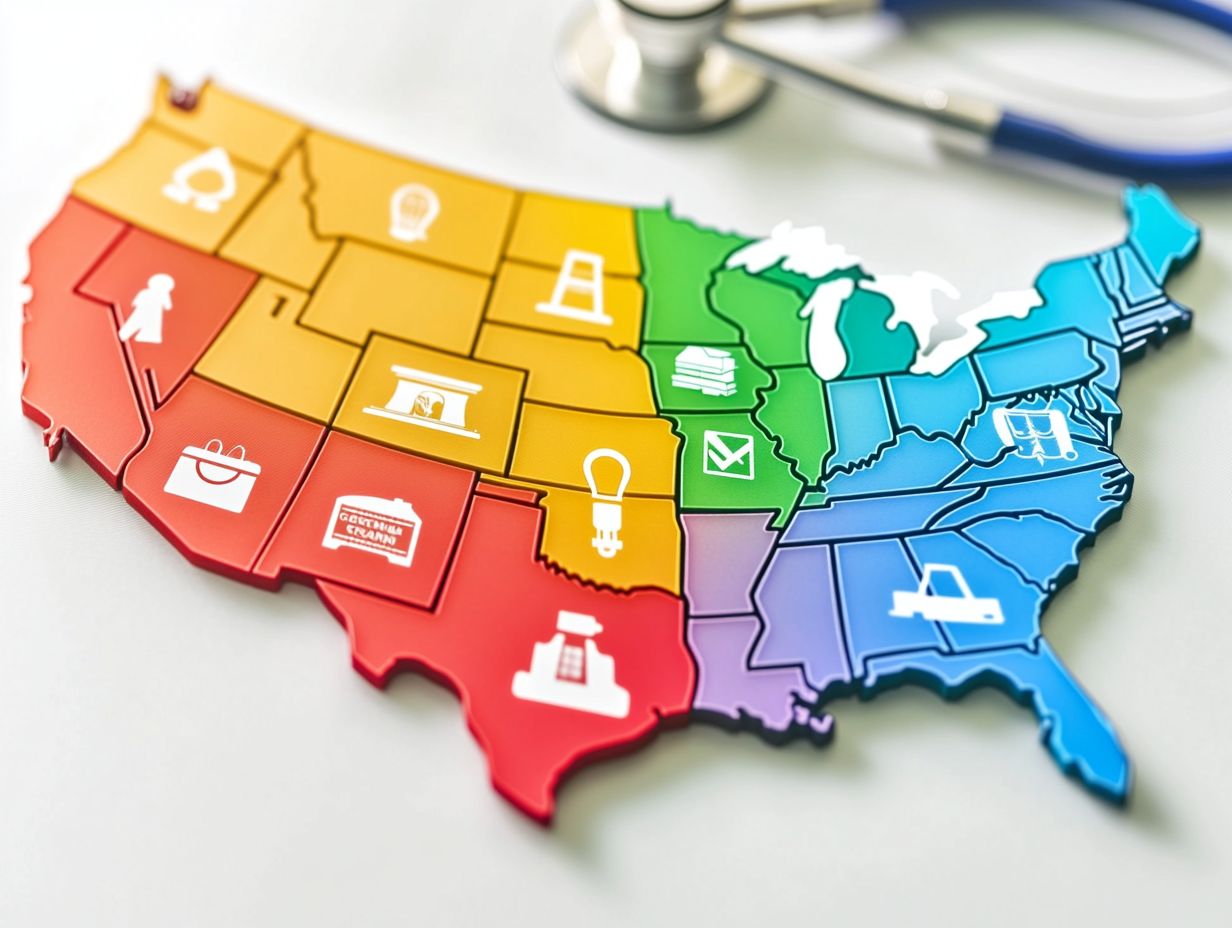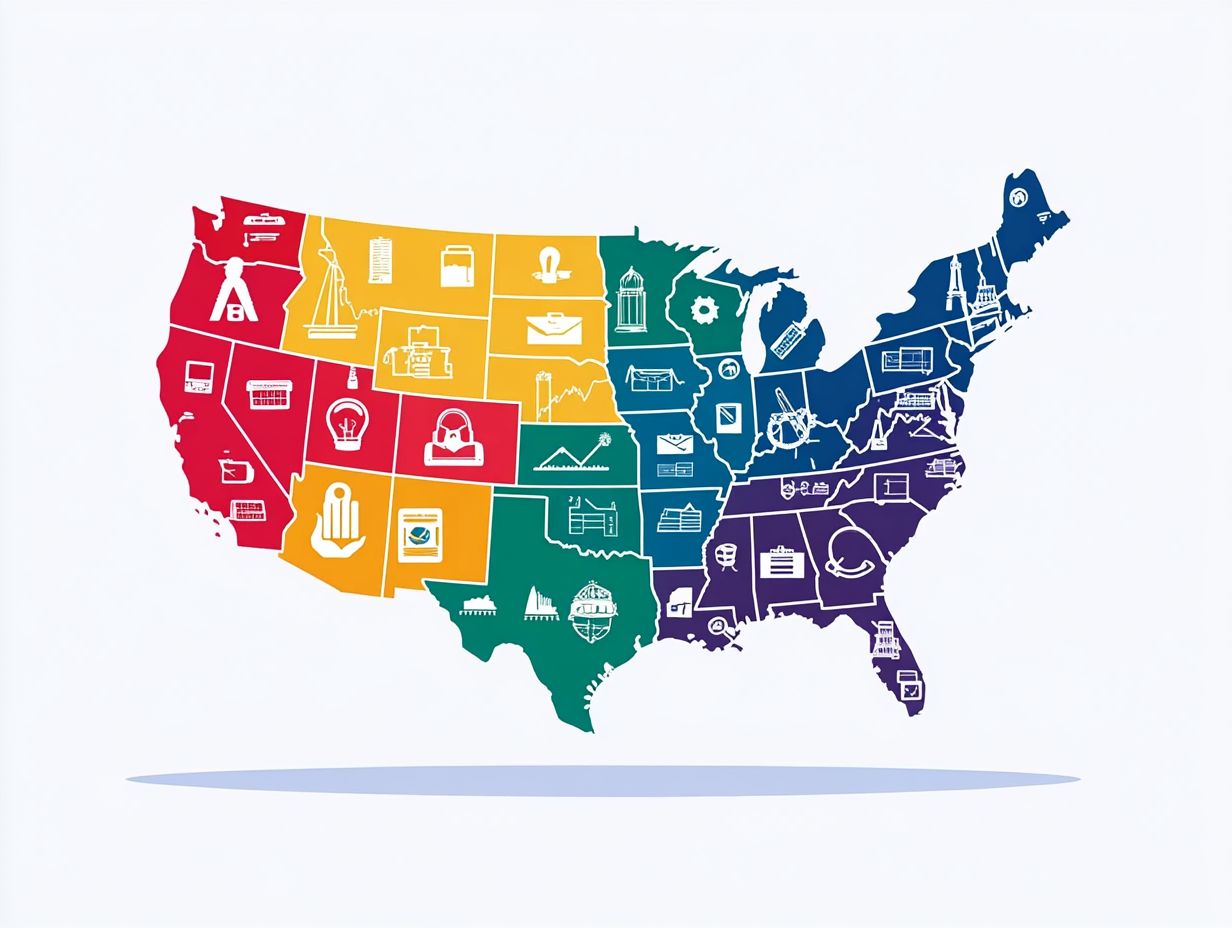5 States with the Strictest High-Risk Insurance Laws
Navigating the world of high-risk insurance can feel overwhelming, especially if you find yourself in one of the states with strict regulations. Discover the five states where high-risk insurance laws are toughest: California, New Jersey, Massachusetts, Hawaii, and New York. You ll learn what high-risk insurance entails, the factors that influence rates, and the potential pitfalls of going without it.
You ll also find valuable tips on reducing your rates and whether this type of insurance is accessible nationwide. Whether you re looking for coverage or just curious about the details, this guide offers the essential information you need.
Contents
- Key Takeaways:
- 1. California
- 2. New Jersey
- 3. Massachusetts
- 4. Hawaii
- 5. New York
- What Is High-Risk Insurance and Why Is It Necessary?
- Frequently Asked Questions
- What are the 5 states with the strictest high-risk insurance laws?
- Why do these states have strict high-risk insurance laws?
- What is considered high-risk when it comes to auto insurance?
- Are high-risk insurance laws the same in all 5 states?
- What are the consequences of not having high-risk insurance in these states?
- Can high-risk drivers still find affordable insurance in these states?
Key Takeaways:

- The strictest high-risk insurance laws are found in California, New Jersey, Massachusetts, Hawaii, and New York!
- Factors like driving history, credit score, and age determine the need for high-risk insurance.
- Strict laws in these states lead to higher insurance rates for high-risk drivers.
1. California
California ranks among the most populous states in the U.S., creating a dynamic and competitive car insurance landscape. You ll find various options, from usage-based insurance to numerous providers that cater to the diverse needs of its residents, offering a range of auto insurance policies aimed at ensuring adequate coverage for every driver.
With a minimum liability coverage requirement of 15/30/5, it’s essential to navigate your choices thoughtfully to guarantee compliance and protection. This unique regulatory environment offers plans tailored to both budget-conscious consumers and those seeking premium coverage.
A recent report reveals that California drivers pay an average of $1,200 annually on insurance, significantly higher than the national average. The competitive marketplace continually evolves, prompting insurers to innovate, raising concerns about affordability and accessibility for low-income drivers, especially when compared to neighboring states.
2. New Jersey
New Jersey is notorious for its high car insurance costs, influenced by factors like population density, accident rates, and unique state-specific regulations that shape auto insurance rates and the level of financial protection available to drivers.
The intricate landscape of auto insurance laws, including required insurance that drivers must have, adds another layer of complexity to your financial considerations. The state faces a notable number of uninsured drivers, which inevitably drives up premiums for those who are compliant.
To help ease these financial pressures, various discounts and assistance programs are available, allowing some policyholders to discover more affordable options. New Jersey employs robust strategies for insurance enforcement, complete with strict penalties for violations, ensuring compliance is mandatory.
3. Massachusetts
Massachusetts has positioned itself as a leader in progressive car insurance regulation, mandating minimum liability insurance aimed at minimizing the number of uninsured drivers while influencing overall insurance premiums across the state.
This framework protects motorists and promotes responsible driving behaviors. Several factors shape your insurance rates, including your driving record, the type of vehicle you own, and even your payment method. The state has enacted stringent uninsured motorist laws to protect drivers from those who fail to meet their financial responsibilities.
You ll also find a range of discounts available, such as safe driver discounts and multi-policy savings that can significantly reduce your premiums. The requirement for certain community service commitments may affect your eligibility for specific coverage options, making Massachusetts system notably distinct in its focus on risk management and community involvement.
4. Hawaii

Hawaii takes a unique approach to car insurance. It combines a mandatory no-fault system with regulations that stabilize costs and encourage drivers to explore coverage options for potential savings.
This system streamlines the claims process and builds a supportive community among drivers. You ll find numerous assistance programs to help manage costs and ensure access to adequate coverage.
Tracking devices that monitor your driving habits can unlock discounts on your premiums. These factors change how you view and interact with insurance, making Hawaii stand out.
5. New York
New York’s car insurance landscape is complex. You ll face stringent coverage requirements, resulting in some of the steepest insurance costs in the nation.
Securing minimum liability insurance is essential for your safety and the protection of others on the road. Ignoring these obligations can result in serious financial consequences, such as hefty fines or the suspension of your license.
Discovering various discounts can ease these costs, such as safe driver discounts or multi-policy savings. Effective financial planning will help you budget for insurance needs while remaining compliant with state regulations.
What Is High-Risk Insurance and Why Is It Necessary?
High-risk insurance is for drivers who are more likely to have accidents. This could be due to previous infractions or a lack of insurance history.
Keeping your coverage intact is vital. Driving without insurance can lead to hefty fines and legal troubles.
Insurance companies assess your driving history, vehicle type, and claims history to determine your risk level. Options like liability, collision, and comprehensive insurance help protect high-risk drivers on the road.
What Are the Factors That Determine High-Risk Insurance?
Factors like your driving history, accident frequency, and adherence to driving laws determine your high-risk status. These elements influence your insurance premiums and available options.
A history of DUI offenses can raise your risk classification significantly. Similarly, prior claims suggest a pattern of accidents that insurers watch closely.
As a high-risk driver, your options may be limited, often directing you to specialized insurers. Navigating this landscape carefully is essential to secure affordable coverage.
How Do These States Determine High-Risk Insurance Rates?

States use various metrics, including driving behavior, accident history, and insurance laws, to set high-risk insurance rates. This leads to significant differences in the insurance market, impacting drivers labeled as high-risk.
These metrics help insurers customize their pricing models. For example, some states have stricter penalties for traffic violations, which results in higher premiums for those with infractions, while others may offer more lenient rates.
Differences in state rules about minimum coverage can create cost disparities. This affects how you assess your financial responsibilities.
This complex regulatory landscape impacts your premium affordability and influences your choices around vehicle safety and maintenance, shaping your overall risk profile with insurers.
What Are the Consequences of Not Having High-Risk Insurance?
Not having high-risk insurance can put you in a tough spot with legal penalties, hefty fines, and the risk of license suspension. This situation can amplify the financial struggles of driving uninsured.
You may also face mandatory community service, reflecting the state s push for responsible driving. Without high-risk insurance, your future premiums could spike, turning manageable expenses into a financial burden.
The importance of following state laws is crucial. Compliance not only shields you from sanctions but also encourages responsible driving, benefiting the community.
How Can One Lower Their High-Risk Insurance Rates?
If you want to lower your high-risk insurance rates, explore strategies like rate shopping and hunting for discounts. Keeping your driving record clean is essential for better financial protection.
Consider carpooling as a way to save on gas and possibly lower your insurance premiums. Many insurers reward those who share rides, seeing it as a safer option due to less time on the road.
By consistently showing responsible driving habits like obeying speed limits and taking defensive driving courses you can unlock better insurance options and lower rates. These small changes can significantly improve your insurance experience.
Is High-Risk Insurance Available in All States?
High-risk insurance is available in every state, though specifics vary based on local market conditions and policies ensuring adequate coverage for all drivers.
In some states, strict rules may limit your options. Others may have flexible frameworks, promoting competition among insurers.
Government programs play a crucial role in expanding your options for coverage. These initiatives aim to protect vulnerable drivers and create a more inclusive insurance market.
Frequently Asked Questions

What are the 5 states with the strictest high-risk insurance laws?
The strictest high-risk insurance laws are in California, New Jersey, Massachusetts, Michigan, and Louisiana.
Why do these states have strict high-risk insurance laws?
These laws protect both drivers and insurance companies from financial losses.
What is considered high-risk when it comes to auto insurance?
High-risk drivers are those with a history of traffic violations or accidents.
Factors like poor credit scores can also make obtaining insurance challenging.
Are high-risk insurance laws the same in all 5 states?
No, they vary slightly by state.
However, all states have strict rules to ensure high-risk drivers have coverage.
What are the consequences of not having high-risk insurance in these states?
Driving without high-risk insurance can lead to severe penalties such as fines, license suspension, or even jail time.
Don’t risk your future get insured today!
Can high-risk drivers still find affordable insurance in these states?
Yes, there are options!
High-risk drivers can compare quotes or seek specialized insurance providers to find affordable rates.





